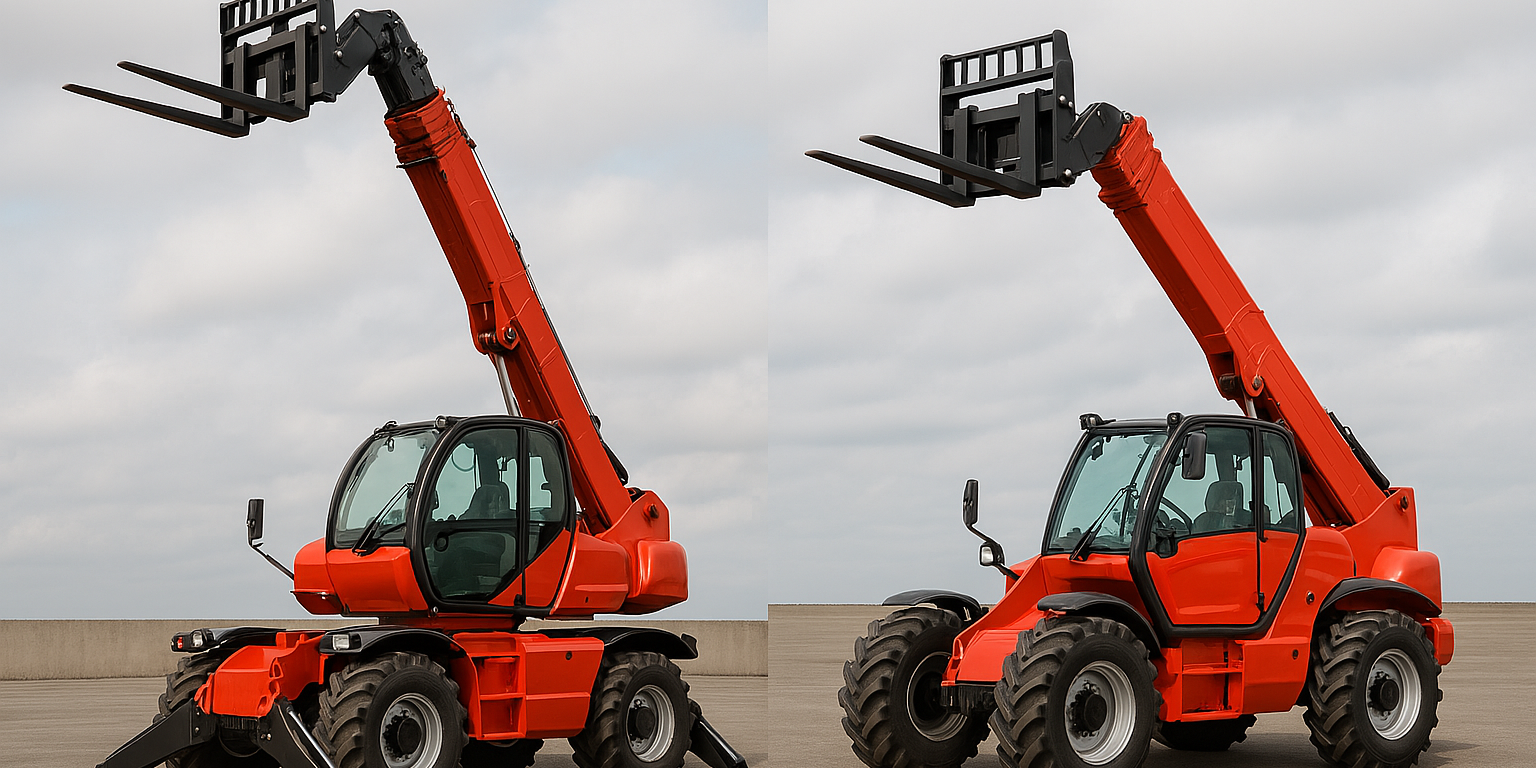In the world of construction machinery, telehandlers are essential equipment for lifting and moving heavy materials. Understanding the difference between fixed and rotating telehandlers can help you choose the right equipment for your specific project needs. This comprehensive guide explores the features, benefits, and applications of both types to help you make an informed rental decision.
What Are Telehandlers?
Telehandlers, also known as telescopic handlers, are versatile machines used to lift, move, and position heavy loads with precision and safety. These powerful machines are essential in construction, agriculture, logistics, and infrastructure maintenance. Telescopic handlers can transport materials at high altitudes, facilitate complex operations, and access hard-to-reach points on construction sites.
There are two main types of telescopic handlers: fixed boom telehandlers and rotating telehandlers. Each type has distinct features and benefits that make them suitable for different construction applications.
Fixed Boom Telehandlers: Features and Benefits
Fixed boom telescopic handlers feature a non-rotating turret that limits the movement of the telescopic arm to vertical and horizontal planes. The fixed design includes a stable base, a fixed turret, and a telescopic arm that can extend forward and lift to reach considerable heights and distances.
Key Benefits of Fixed Boom Telehandlers:
- Heavy-duty capabilitiesfor transporting equipment across rough terrain and long distances
- Greater stabilitywhen handling heavy loads
- Longer boom lengthfor major projects with wide spaces
- Ideal for repetitive, high-intensity workwhere rotation isn’t necessary
- Perfect for construction siteswhere vertical and horizontal movements are primarily needed
Fixed teelscopic handlers excel in construction projects that require lifting materials, laying panels, or building small walls. They’re also useful for handling goods inside warehouses where lateral movement isn’t essential.
Rotating Telehandlers: Features and Benefits
Rotating telescopic handlers combine the features of traditional telehandlers with a 360-degree rotation capability. Both the cab and telescopic arm can rotate around the central axis, allowing operation on large work areas without moving the machine body.
Key Benefits of Rotating Telehandlers:
- 360-degree turret rotation enables reaching further and faster in complex spaces
- Higher lifting capabilities with some models reaching up to 167 feet
- Increased versatility for tight access projects
- Greater operational flexibility for reaching difficult access points
- Reduced need for machine repositioning, saving valuable time on construction sites
Rotating telescopic handlers have become exceedingly popular since their development in the late 1900s. Their design allows contractors to reach further, lift higher, and handle heavier loads in complex spaces without constantly repositioning the machine.
Comparing Fixed vs. Rotating Telehandlers
When choosing between fixed and rotating telehandlers for your construction project, consider these key differences:
- Mobility and Reach: Fixed telescopic handlers require frequent repositioning in complex spaces, while rotating telehandlers can reach multiple areas from a single position thanks to their 360-degree rotation capability.
- Lifting Capacity and Height: While fixed telescopic handlers offer stability for heavy loads, rotating telehandlers can lift heavier loads higher, with some models reaching up to 167 feet in height.
- Versatility: Rotating telescopic handlers can function as multiple machines in one, serving as a telehandler, rough terrain crane, and aerial work platform with the right attachments.
- Efficiency: Projects using rotating telescopic handlers can see productivity increases of up to 100% compared to fixed telehandlers, especially in tight construction areas.
Choosing the Right Telehandler for Your Project
When selecting between fixed and rotating telehandlers for your construction project, consider these factors:
- Project space: For cramped areas, rotating telehandlers offer better accessibility
- Lifting requirements: Consider the height and weight of materials you’ll be lifting
- Terrain conditions: Fixed telehandlers may provide better stability on rough terrain
- Project complexity: Multi-functional projects benefit from rotating telehandlers’ versatility
- Budget considerations: Evaluate rental costs against productivity gains
Choosing the most suitable telehandler type according to your specific construction needs is essential to maximize efficiency, minimize operating costs, and ensure workplace safety.
Conclusion
Both fixed and rotating telescopic handlers offer unique advantages for construction projects. Fixed telescopic handlers provide stability and strength for straightforward lifting tasks, while rotating ones deliver versatility and efficiency in complex spaces.
By understanding the differences between these two types of telescopic handlers, you can make an informed decision when renting a telehandler for your next project. The right telehandler will help you complete your construction tasks safely, efficiently, and cost-effectively.
Contact our rental team at rentmas today to discuss your specific project requirements and find the perfect telehandler solution for your construction needs.






